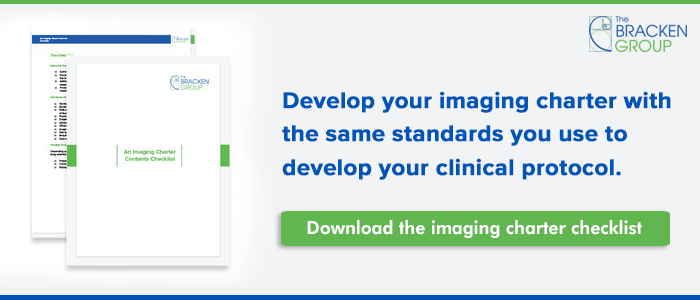Trends in Oncology Clinical Trials
James Gilligan
Cancer continues to present new challenges and opportunities for pharmacologic intervention. Accordingly, the pharmaceutical industry continues to pursue the development of cancer drugs at an unparalleled rate. Three major trends have emerged over the last several years to fuel this pursuit:
-
the evolution of clinical trials
-
strong and growing pipelines of drug candidates, and
-
a sharp increase in available clinical data.
Further driving this movement is the advent of artificial intelligence (AI) in oncology, which shows promise for the detection and diagnosis of cancer, and may have applications in treatment planning as well.
The Evolution of Oncology Trials
With limited understanding of the underlying causes of cancer, early approaches to cancer treatment focused largely on surgery, with only limited benefit to patients. In 1937, the National Cancer Institute (NCI) was established as a division of the National Institutes of health (NIH). The NCI was largely responsible for overseeing clinical research into cancer treatments. By 1973, most oncology trials were conducted at NCI-designated comprehensive cancer centers.
Start Using TrialTrends: A Free Tool That Visualizes Clinical Trial Registration Rates
As new research shed further light on the underlying causes of various cancer types, the science of oncology trials changed accordingly. For example, in the mid-1970s, two studies explored the use of single-agent and combination therapy in adjuvant breast cancer, and in 1978, the FDA approved tamoxifen for the treatment of breast cancer.
Oncology trials evolved to include phase I dose‐ranging studies, phase II efficacy trials in a single tumor type, phase III trials to compare potential new drugs to standard-of-care, and phase IV studies to extend safety and efficacy data beyond market approval. The application of statistical analysis methods has provided even further retooling of the industry, and statistical analysis is now recognized as one of the cornerstones of evidence-based clinical research.
It’s worth noting that, unlike clinical trials for other diseases, phase I oncology trials are conducted in patients rather than healthy volunteers because the safety profile of anti-cancer drugs doesn’t allow for testing in healthy subjects; in addition, the availability of new cancer drugs, even in their investigational stage of development, is often a beneficial treatment option for many cancer patients.
Reacting to Patient Need
By the mid-1980s, the biopharmaceutical industry had begun to invest heavily in oncology trials, and by the 1990s, oncology was the industry’s largest focus of clinical drug development. This focus has continued to increase over the last several decades as more scientific advances have been made in molecular genetics, cell biology, chemistry, molecular biology, and immunology.
Oncology trials continue to lead the biopharmaceutical industry’s efforts to develop new drugs. By the end of 2018, the number of compounds in clinical development for oncology was more than twice as many as the number in development for CNS disorders, the pharmaceutical industry’s second largest therapeutic area of focus.
The Evolution of Regulatory Assessment
The FDA has also responded to the call with its own adaptations in how it reviews and approves new drugs for unmet needs of serious diseases, such as cancer. The FDA has developed numerous documents, guidelines, and initiatives aimed at accelerating the development and approval of safe and effective cancer drugs. Here are some of the most important ones to be familiar with:
The EMA is making similar moves to address unmet medical needs and speed patient access to beneficial new medicines. In 2015, the EMA released its guidelines for accelerated assessment of eligible medicines. The PRIority MEdicines scheme (PRIME) was launched in 2016 to identify those products at an early stage of development that have the potential to address unmet medical needs and help patients to benefit as early as possible from therapies that may significantly improve their quality of life.
Innovation Drives Growth
Better insight into the etiology and classification of different tumor types has led to a shift in oncology treatment strategies. Innovation is the leading trend in oncology drug development. This is reflected in the rise of biotechnology in anti-cancer drugs, including immunotherapies, adoptive-cell therapies, and new vaccines. This drive for innovation is reflected in the growing number of first-in-class drugs entering the market since 2015, and by drugs approved for specific tumor types.
Immunotherapy drugs are leading the pack with almost 300 molecules with 60 separate mechanisms being evaluated in phase I or phase II trials. Largely focused on the PD-1 and PD-L1 checkpoint inhibitors, these trials are evaluating 23 different tumor types, reflecting the broad-based application of this new approach to cancer treatment. Of the 14 cancer therapeutics launched in 2017, all of them were targeted therapies and 11 were granted Breakthrough Therapy designations by the FDA.
The oncology pipeline shows no signs of slowing down. According to industry reports, over 600 companies have one or more oncology drugs in late-stage development, while 14 of the world’s largest pharmaceutical companies have at least one-third of their late-stage R&D activity focused on oncology.
The number of active compounds in oncology R&D has quadrupled since 1996 and nearly doubled since 2008, with more than $50 billion being invested in oncology R&D annually. Oncology makes up nearly 40% of the global clinical pipeline, with more than 700 molecules in late-stage development in 2017. This represents an increase of over 60% from the previous decade. Almost 90% of these therapies are targeted treatments.
Future Trends
As our understanding of cancer continues to evolve, so does our approach to developing effective cancer treatments. Precision medicine has come to the forefront of new thinking for disease prevention and management. The Precision Medicine Initiative (PMI) was established in 2016 to provide new tools for developing targeted therapies, such as molecular and genomic profiling.
Precision medicine tailors medical treatments to the individual characteristics of each patient. It takes into consideration a patient’s variability in genes, environment, and lifestyle.. In contrast to traditional approaches to disease prevention and treatment, precision medicine allows healthcare providers to more accurately predict which treatment approaches are best suited for which patients.
As precision medicine leads the way in new treatment strategies, clinical trial designs continue to adapt and evolve. Two of the latest oncology trial designs are basket trials, which “test the effect of one drug on a single mutation in a variety of tumor types,” and umbrella trials, which assign patients to one of many different treatment arms within a single trial, based on their cancer type and its specific molecular profile.
Breakthroughs Leading to a Brighter Future
Cancer patients have benefitted significantly from breakthroughs in cancer research and the evolution of clinical trials, and contributions continue to be made by the biopharmaceutical industry, governmental institutions, global organizations, cancer foundations, and private and public research groups.
Overall incidence and mortality rates of cancer for all tumor types has declined steadily since 1992, due to advances in the field. People living five years or more after a diagnosis of cancer is projected to increase and additional 31% by 2026—an increase of more than four million cancer survivors in less than a decade.
These advances continue to play an important role in the development of targeted therapies, which significantly increase the overall survival and quality of life for cancer patients.



.png?width=352&name=Untitled%20design%20(45).png)
